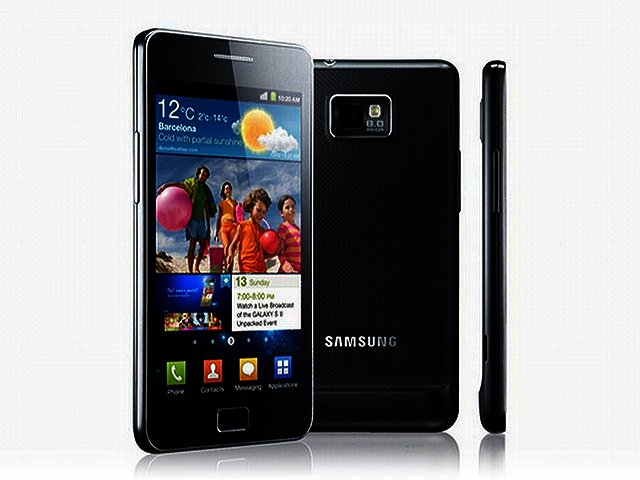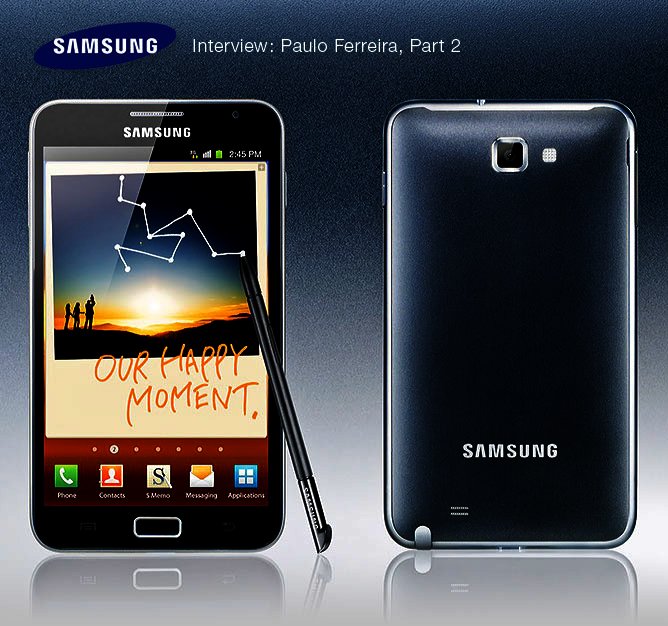Paulo Ferreira, Samsung SA, Part 2
By Ryan Noik 6 October 2011 | Categories: sponsored content

Part two of our interview with Paulo Ferreira, head of Mobile Product and Business Solutions at Samsung South Africa, where we chat about the future of tablets. (Click here for part one)
Many sizes to fit all
There is a curious balance between providing devices that offered high levels of performance and durability, while still being thin and light. Ferreira explained that because of the portable nature of tablets, users gravitate towards devices that are as light as possible, which meant that competition was driving greater innovation around reducing a device's weight as well as increasing its feature set. He cited the Galaxy 10.1 as an example, where the company was able to improve on the aesthetics and thinness of the device and reduce its weight, while simultaneously increasing its performance. This trend is something we could expect to see more of across the entire product portfolio, as a result of both of the competitive nature of the industry and the company's own research and development.
However, it was primarily the market that was determining the size of the tablets themselves. Ferreira added that research had shown that the majority of users preferred the larger size of a 10.1" tablet, followed by those who preferred a smaller 7" device. However, there was still a niche market for a device such as an 8.9" tablet that fit somewhere between the two, most particularly amongst business users.
He explained that there was a definite point size at which a smartphone crosses the line to become a small tablet. Indications were that the 4.3" or 4.5" mark was the ideal size for a smartphone, where beyond the 5" mark was considered a small tablet or new type of device. Ferreira explained that the company wanted to offer users as much choice as possible. To this end, the company's strategy was to create a portfolio of products that addressed a range of needs and preferences rather than a one-size-fits-all approach, while differentiating its tablets from the competition by striving to produce increasingly more innovative products. Equally as important is giving users a device that's locally relevant. Ferreira cited the Readers Hub as an example, whereby users could buy local publications rather than solely international ones.
The Next Frontier
According to Ferreira, the one request from users moving forward was for variations in colour and design, for both tablets and smartphones. To this end, the white Galaxy Tab S2 will possibly become available in the next few months.
However, tablets were by no means limited to the consumer space. In fact, Ferreira believes tremendous opportunities exists amongst corporate customers, in particular vertical industries such as the retail, manufacturing, medical, education and insurance fields. Customised tablets would cater to niche users who would also be able to take advantage of apps that had been created specifically for their industry. Additionally, Ferreira predicts more tablets being specifically designed for particular industries, to cater to the rigors and demands of their particular on the job requirements. He believes that this is an important market for tablets in the future, and it was here that the argument could be made for tablets to act as an alternative to using a notebook or netbook.
Whether for corporate use or for general users, Ferreira anticipates that in the future we can expect the features on offer to only improve. Dual-core processors would give way to quad-core processors, and the inclusion of more memory, higher quality screens, improved battery consumption and faster connectivity are a given. However, as the tablet space matures, Ferreira expects tablets to become more widely available to a broader range of income groups. As prices fall, they would become even more appealing for and prevalent within the mass market.
Samsung's Galaxy SII has sold over 10 million units.
Crossing the Divide
He pointed out that this is the same trend that smartphones followed, moving from being accessible to a small, premium market of customers eighteen months ago who could afford them, to becoming increasingly affordable and mainstream.
Additionally, it had another, unanticipated consequence. The popularity of smartphones had resulted in people in corporate environments buying a high-end smartphone on their own and then bringing them into their work environment, and requesting access to the corporate network that was previously only made available to high-end executives. This had breached the previously established hierarchy within organisations, where previously smartphones were allocated to a select few. This also meant that the average worker was putting pressure on company's IT departments from the bottom up to gain access to previously inaccessible features.
This in turn could change the way organisations conducts business and approach mobile devices. According to Ferreira, the challenge to companies and their IT departments is to be able to manage multiple mobile devices and a variety of platforms, whether they be iOS, Android or BlackBerry OS. All this while offering choice to employees who want to take advantage of the features offered by increasingly smarter and more powerful smartphones and tablets.
Feature Tips
Ironically, as both smartphones and tablets offered more features, many users may not be aware of all the features on offer. Ferreira points out that many users don't know that the Galaxy S2 has turn-by-turn navigation called Drive and Walk and instead used Google Maps. On the Galaxy Tab 7, Ferreira pointed out that video calling and Google Maps' Street View was particularly handy on that device and could be used more widely. He also encouraged people to search on the market for locally relevant applications as well as apps that were designed for their industry. On the Galaxy 10.1, he singled out the notepad feature as an often ignored feature, as well as the potential for users to take advantage of the tablet's ability to run a virtualised desktop or a Windows application in the cloud.
To the point
While the debate rages on whether we are entering a post PC era, and whether it is the inevitable end of the road for netbooks and notebooks, one thing seems abundantly clear: phones will only get smarter, tablet computers will continue to become more powerful (and thinner) and the technology industry seems destined to become a whole lot more exciting.
Most Read Articles

Have Your Say
What new tech or developments are you most anticipating this year?




